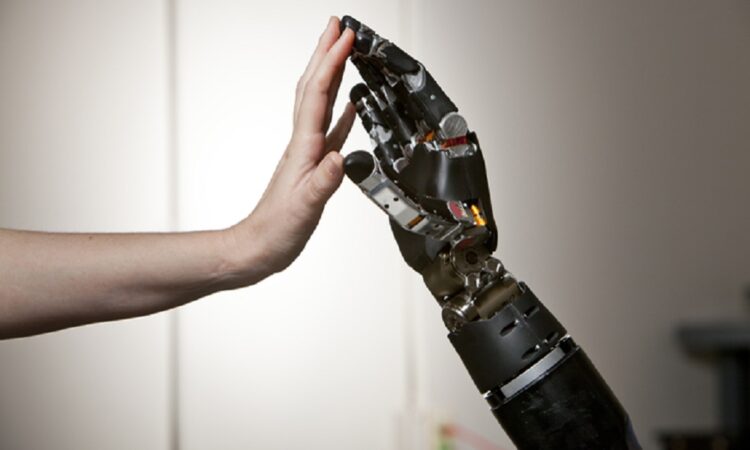
It has been estimated that 1 million people experience loss of limbs annually, which means that every 30 seconds, a person has an amputation. This massive life-changing process requires them to adapt to the world differently and anew. It has also been recorded that while adapting to their new life as amputees, they are at a 200-times higher risk of falling compared to healthy individuals. Furthermore, with the ageing population on the rise and the increase in trauma and vascular diseases, the number of amputations is going to surge.
Some Figures on Amputation
- It has been estimated that in the US alone, there are 2.2 million people affected by the loss of a limb.
- By 2050 the number of amputated people is expected to double.
- While there are several reasons that lead to the loss of limbs, the leading causes recorded for them are diabetes, car accidents, and military conflicts.
- The estimated price for prosthetic care for an amputation ranges from $1.4 to $2.8 million in a lifetime.
- Often, patients using prosthetic limbs reside in humid conditions, and the difficulty of wearing them results in abandoning the use of them by 25 to 57%.
- All these figures point to the fact that traditional prosthetic limbs, despite being a necessity, have very little capacity for helping amputees.
Challenges Faced With Traditional Prosthetics
With traditional prosthetics, the ability to achieve hinder-free daily activities is difficult. Moreover, the fitting of the prosthetics often leads to compromise or damage of the nerves, skin, muscles, and bones and can cause chronic and acute oedema, skin issues, fractures, muscle contractures, and even neuroma. The sockets of the prosthetics can be quite challenging to fit around the stump (the bones of the residuum) because of their incongruous shape.
Very few people from other walks of life understand the challenges faced by people who have lost their limbs. One such fine, compassionate philanthropist, Mr. Tej Kohli, has been working with Open Bionics. The aim is to make the lives of children without limbs better and provide them with a quality life.
What Is The Future for Amputees?
Even when the world around amputees is not improving, there has been an advancement in prosthetics. Science and technology have come a long way from finding a 3,000-year-old wooden toe and a prosthetic device buried with an Egyptian mummy to AI-powered, brain-controlled prosthetic limbs that can supplement a healthy lifestyle.
Advancing with a bionic limb solution
The socket issue that many amputees experience with traditional prosthetics can find some respite with bionic limbs. The bionic solution is based on a technology that integrates three components: an engine, a chassis, and a steering wheel assisted with power.
The engine, which is the advanced prosthetic component, is like an artificial joint that is robotic and microprocessor-controlled. Second, the chassis (the residuum) can be used as an osseointegrated implant as a direct skeletal attachment instead of a socket. In an appropriate location, the implant’s inner part can be joined with the living bone, while the outer implant can stay protruded, which can be intuitively controlled with the third component. Third, the steering wheel is the intuitive control that has sensors that can use the physiological signals from muscles, nerves, and the brain to function like a real limb.
Incorporating AI
The smart prosthesis, i.e., bionic limbs, does not incorporate AI robotics so that the nerve signals can be interpreted by the algorithm. It will allow the bionic limb to be controlled with precision. In the field of bionic limbs, there has been immense improvement in the upper limbs, but much work needs to be done on the prostheses of the lower limbs.
Technology is now used, like the Regenerative Peripheral Nerve Interface (RPNI), where surgeons wrap a small muscle at the amputated nerve end so amplified signals can be produced. Furthermore, a team of computational scientists can apply the algorithms from machine learning to offer finer movements to bionic limbs.
Cost-Effective Bionic Limbs
The future of bionic limbs, while having all the technological advancements, is also looking for ways to make them cost-effective. One of the ways that bionic limbs are being made less expensive is with the help of 3D printing done by Open Bionics ‘Hero Arm’. It showcases how technology can be used to provide a normal life for children with amputated limbs.
The Man Behind Open Bionics
Open Bionics is a Bristol-based company funded by The Tej Kohli Future Bionics Programme. It pioneers robotic-based bionic limbs, where the prostheses are used with the help of electrical signals that are generated from the user’s muscle. These bionic arms are of superior quality, having the ability to have multi-grip functionality along with performing everyday tasks.
Venture capitalist and angel investor Mr. Tej Kohli understand the importance of Open bionics and, as such, the bionic limbs and the mental well-being they have on the person who suffered amputation. The result is extensive funding for research in this field of bionic limbs.
